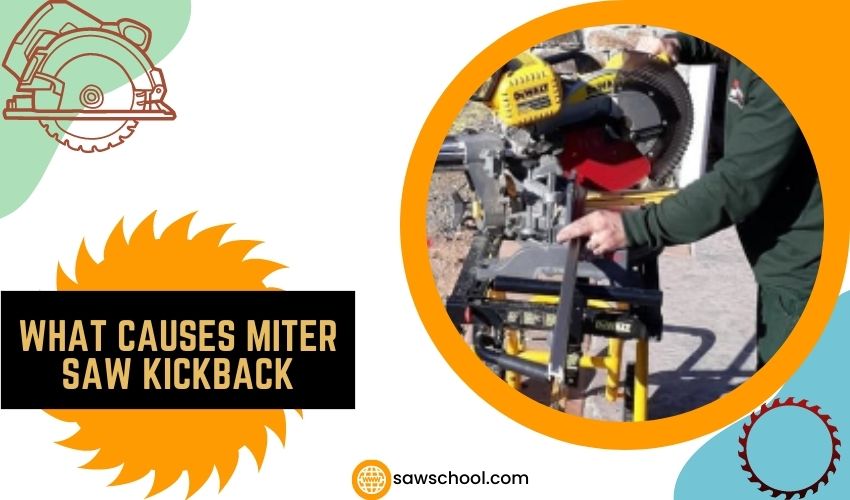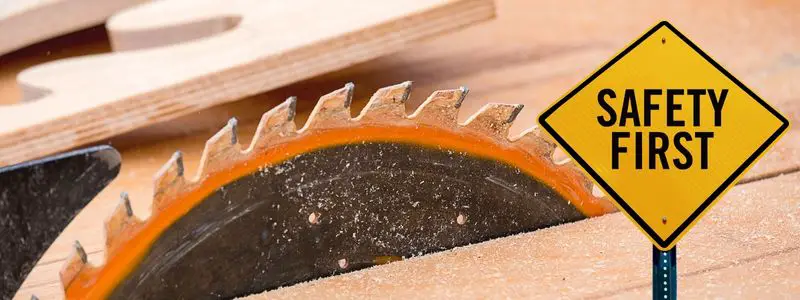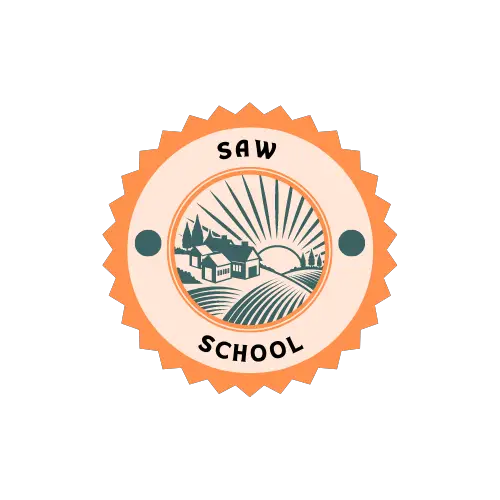One of the dangersof using a power saw is kickback. When the blade touches the material, and instead of cutting through it, it throws the material toward the user, injuries can occur. But what causes miter kickback, and how can you prevent it from happening?
Using a dull blade, putting too much force while cutting the materials, and not following the safety protocols are a few of the most common reasons to cause kickbacks in miter saws. You can prevent these kickbacks only by being a bit careful.
Let’s discuss what’s causing kickbacks in your miter saw and how you can prevent them.

Discover What Causes Miter Saw Kickback? (7 Common Reasons)
Kickbacks in a miter saw are a common occurrence that can come from a few sources. The most common reasons why you might be experiencing this are mentioned below.
1. Damaged Blade
One of the reasons to cause kickbacks in your miter saw is a damaged blade. The term damaged here refers to a warped, bent, bluntblade. If you are using a warped, bent, or blunt blade, this can result in frequent kickbacks.So, check your blade thoroughly for any damages.
2. Too Much Force
When you are putting more force than it’s required, the material may kickback when the blade comes in contact. Check if you’re putting too much pressure on the head when cutting any material. The user shouldn’t require much physical strength, and the material should be cut more comfortably.
3. Inaccurate Blade
Many times, people end up using the wrong blade for the wrong material. There is a diverse collection of blade types available for your miter saw that are suitable for a variety of materials. The teeth count is a significant feature in determining the suitable blade for a specific material.
For instance, you will need a lower teeth count blade when cutting hardwood. On the contrary, a higher teeth count is required for cutting MDF boards. If you want to learn more about the teeth count of your miter saw blade, make sure to read my article on 60 vs 80 vs 100 tooth miter saw blade.
4. Inadequate Speed
As I have mentioned, you can’t put too much pressure while cutting anything with your miter saw. So, you need a certain amount of speed so that the blade goes through the material effortlessly. If the blade is not spinning at a certain speed for some reason, it can cause the miter saw to cause kickbacks.
5. Improper Method
There’s a certain way of cutting materials using a miter saw. It’s essential to stick to that method. If you are altering anything, this can end up in kickbacks. For instance, if the material you are cutting is not fixed firmly against the fence, it can cause kickbacks. New users of a miter saw are more likely to face this situation.
6. Difficult Materials
Some materials are naturally more difficult to cut than others, especially the ones that come with a rough surface. Besides, some materials chip and break easier than others if you are not being extremely careful with the cut. Broken pieces can also fly around, so that’s one of the reasons why miter saws might experience kickbacks.
7. Faulty insert
The throat plate is another thing to cause kickbacks. It’s not directly involved in making the miter saw kickback, but it certainly facilitates the procedure. So, check for damages in the insert. If the gap between the edges and the blade is too wide, this might be helping the kickbacks.
No More Kickbacks: How To Prevent Miter saw Kickbacks?
When you find out what’s causing the kickbacks, it gets easier to fix the issue. Let’s take a look at the possible fixes you should try when preventing miter saw kickbacks.
Use A Sharp Blade
The first thing to ensure efficient use of the miter saw is to use a sharp blade. Because blunt blades can kickbacks, not to mention injuries to the user, you should always use a sharp blade. It will also ensure sufficient speed when you’re cutting a material. The smoother the cut, the less chance of kickbacks.
Specific Blades For Specific Materials
As I have said before, using the wrong blade for a specific material can cause kickbacks. So, make sure you know what blade to use for the material you are cutting. In addition, it’s best to keep one or two extra blades in your stock if you are going for longer loads of materials.
Zero Clearance Insert
Many users have mentioned that using a zero clearance insert has significantly reducedthe kickbacks. Some materials are more difficult to cut and may cause kickbacks anyway even when you’re using the right blade, speed, and force.
So, to make sure that you’re facilitating the cutting procedure as much as possible, get a zero clearance insert for your miter saw. You can either buy one or make one by yourself. Here’s a video on how to make a zero tolerance insert for your miter saw.
Adequate Force
Avoid putting too much pressure on the material. The blade should be sharp and spinning at its highest capacity. When you make the blade contact with the material, it shouldn’t require much physical effort.
When the blade doesn’t cut the material smoothly and puts too much force, it can cause the miter saw to kickback.
Wait For The Blade To Stop
Another thing to remember is to wait until the blade stops spinning before pulling it upwards. Once you are thorough with the cut, allow the blade to stop spinning and then pull back. If you pull while the blade is spinning, it can cause kickbacks.
Woodworking Safety Matters: Why Preventing Kickbacks is Essential for Woodworkers

Even though most of the time, kickbacks do not result in extensive damage, there is always a high risk involved. The primary reason for injuries caused by a miter saw is generated from kickbacks. So, if you want to ensure safety, the first thing to do is to prevent kickbacks.
Fixing this kickback issue is comparatively easier than other problems. You can prevent kickbacks only by making sure that you are operating the miter saw the right way. So, if you’ve been experiencing kickbacks from your miter saw every now and then, make sure that you are not ignoring it.
Safety Tips
- Never ignore the safety features of your miter saw. Make sure that the blade guard is in place and the brake is working properly before getting started.
- Familiarize yourself with the miter saw and how to cut certain materials. It can take some time, but the kickbacks will get better once you feel more comfortable using your miter saw.
- Check the user manual if you have any queries about how the miter saw works. If there’s something wrong with any of the components, make sure to fix it before using the unit.
- Keep the miter saw and the workshop clean. Have an efficient dust collection system. With a better dust collection system, the small flying pieces will not come your way.
- If, after doing everything according to the rules, you still experience kickbacks, make sure to take it to a mechanic to get it checked. Besides, frequent maintenance will increase the miter saw’s longevity.
Frequently Asked Questions

How do I know when to replace my miter saw blade?
When you notice your miter saw blade is not cutting the materials as efficiently as it’s supposed to, it’s time to change the blade. Blades can become dull over time. If you notice that the blade requires more force to cut through the material, it can be an indication that the blade has become dull.
Some other symptoms to look out for are when the blade is burning your material, or the cuts aren’t clean as before. Moreover, also look out for a warped or broken blade.
Is a miter saw safe to use?
A miter saw is safe to use when you are following the rules. This means allowing all safety features to function at their best, following the proper method of cutting the material, as well as being cautious during the process.
If you are cautious enough, you can operate the miter saw safely and avoid injuries. Doing dangerous things like removing the blade guard or using the miter saw when the brake isn’t working will increase the chances of injury.
End Notes
Most of the reasons what causes miter saw kickback are solvable, and most of them are external. So, even if you are a newbie at woodworking, you should be able to fix the issue, given that you can identify what’s causing the kickbacks.
The rule of thumb is to make sure everything is running the way it’s supposed to. That includes using a sharp blade, using specific blades for specific materials, installing a zero-tolerance insert, and so on. But also, you need to be comfortable with your miter saw. The more you familiarize yourself with your miter saw, the better performance you can expect from it. It’s not so much about the machine as much as it is about the user.
